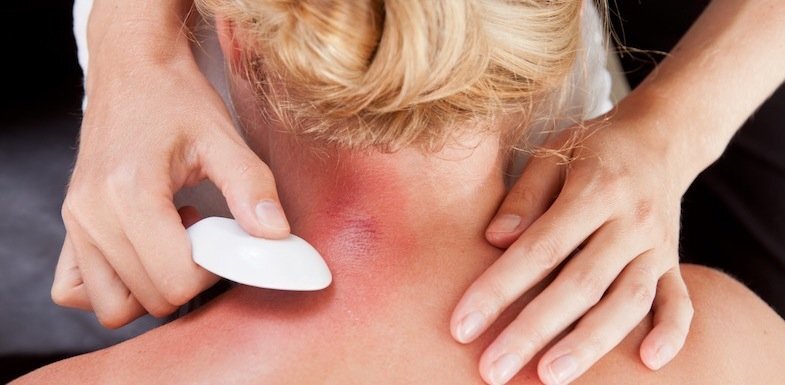Why I Love Gua Sha
What is gua sha? Does it help with pain? Does it help with inflammation? How is it done? Does it hurt? Read on for more information about gua sha.
Often when I am treating pain, I use a combination of acupuncture, massage, and gua sha. I find that most people are familiar with cupping, but not gua sha. The two modalities have similar effects. I have a preference for gua sha as I feel I have more control over the intensity than I do with cupping. Most people love the way it feels, as well.
In Chinese, the word Gua is defined as scraping or rubbing, and the word Sha as an area of red skin. Together the words Gua Sha (pronounced Gwar Shar) indicate a method of rubbing or scraping to produce small red spots called ‘petachiae’. Variations of Gua Sha, have been found throughout Southeast Asia and it has a long and rich history. In China, it dates back to the Tang Dynasty (618 – 907 AD). Gua Sha has been shown in various studies to increase circulation which reduces pain. The therapy also clears heat, which is why for generations it was used as a method of reducing fevers, in both the young and the elderly.
Just some of the conditions I use gua sha in combination with acupuncture and massage are:
Post exercise soreness
Back & Neck Pain
Shoulder Pain / Rotator Cuff Injury
Ankle Injury
Carpal Tunnel Pain
Headache / Migraine
Fever
Common Cold
Traditionally, tools such as smooth edged coins, jade stone & buffalo horn were used, with an oil based medium rub the skin. However, today the most common tools are flat pieces of jade stone, or commonly, a porcelain Chinese soup spoon.
A study using laser doppler imagiing measured the effects of gua sha on blood flow of the area treated and it was found that there was a 400% increase of microcirculation in the first 7.5 minutes after treatment with a significant elevation for 25 minutes after. With this increased blood circulation comes an increase in oxygen, white blood cells (such as lymphocytes), reduction in lactic acid and an increased surface temperature. All of this allows muscles to relax, absorb nutrients and expel accumulated toxins.
Research has also shown that gua sha triggers the release of a hormone called heme-oxygenase-1, which is needed for internal anti-oxidant and anti-inflammatory molecules to work efficiently. With further investigation, this may be promising for those with conditions that result in the inflammation of smooth muscle, such as asthma, inflammatory bowel disease and even chronic Hepatitis B.
So what does it feel like to receive gua sha? If treating the body, there is no more discomfort than receiving a firm massage. These are similar in the way cupping will produce red circles. The spots are not damage to the skin, but rather are areas where blood has been squeezed out of the superficial vessels which increases the overall blood flow in the area, improves oxygenation which in turn reduces pain and relaxes muscles.
Gua sha is not appropriate if you are taking medications which thin the skin such as corticosteroids, if you have sunburn, and it would never be applied over areas such as raised moles.
After the treatment, the red areas are not painful and fade somewhere between three and seven days, depending on your own circulation. It is recommended to keep the area covered and out of direct sunlight for a few days. It is the accumulated redness that brings the additional blood flow and hence the healing and systemic benefits of the treatment.

